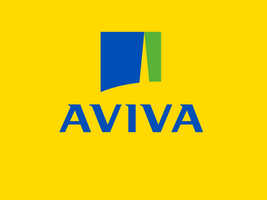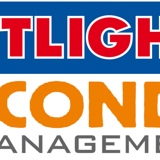Information
-
JP Inspection Report
-
Client / Site
-
Conducted on
-
Prepared by
-
Location
-
Personnel
ADMINISTRATION
-
Site safety staff attend required meetings
-
TBT is carried out and record is available
-
Safety personnel present at site
-
Sufficient coverage of safety personnel
-
Unsafe condition / act report
-
Permits and JSA are valid
COMPRESSED GAS
-
Individual cylinder storage- upright/secured
-
Placed in safe location / away from traffic
-
Proper manual handling
-
Proper separation of oxygen/fuel gas
-
Leak test liquid available and used daily
-
Caps replaced when not in use
EMERGENCY
-
Emergency number is made known to all?
-
Workers know where the First Aid Room is
-
Evacuation route kept clear
-
Workers know what to do when alarms sounds
-
Workers understand the various alarms
-
First Aid Kit available at site
AERIAL LIFTS
-
Are the operators trained?
-
Daily Pre-Inspection
-
Barricade in place
-
Vehicle Stability, operated from level firm ground (outrigger, pads etc.)
-
Good positioning of vehicle
-
Good housekeeping in bucket/ platform
-
Tool lanyards used
-
Workers do not use equipment as a means of access/ egress
-
Lower over-ride control operational/ practiced
-
Minimum of two men in basket
-
Boom retracted & lowered when driving
WORK AT HEIGHT
-
Workers understand WAH Procedure & 100% tie-off
-
Harness, Lanyards, Shock absorbers in good condition, inspected & color coded.
-
Workers wearing harness & lanyards properly
-
All surfaces have complete guardrails (handrail, midrails & toeboards/ permanent handrails)
-
Scaffolds/ work platforms not overloaded or with loose objects ?
-
Potential drop zones under work area barricaded to protect personnel from falling objects.
-
Tools & materials securely tied off
-
Life lines installed correctly and have current tag
-
Tripping hazards identified
SCAFFOLDING
-
Erect /dismantle by competent persons
-
Scaffold properly inspected / tagged
-
Workers understand Red Tag / Green tag system<br>
-
Platform free of debris
-
Scaffolds not undermined by excavations
-
Guardrails and toeboards in place
-
Material in good condition - no damage
-
Mobile scaffold use - stationary / no riders
-
Scaffolds checked after adverse weather
-
Base plates on solid ground
-
Scaffolds clamps capped on work platforms
-
Complete decking is provided whenever possible & is of scaffold grade material, no wooden decking
-
Scaffolds are free of defects & built per specifications
-
Scaffold boards are secured
HEALTH HAZARD CONTROL
-
Shelter/ shaded area available
-
Drinking water readily available at work location
-
Frequent water consumption encouraged
-
Respiratory Protection Program in place
-
Standing water removed from site asap
HEALTH AND WELFARE
-
Toilets clean and maintained regularly
-
Hand washing areas clean
-
Sufficient space for eating and resting
-
Hand washing facilities provided at eating areas
-
Vector control in place
-
Eating areas are clean & sanitary
-
Food waste stored in covered bins & removed on a daily basis
TRANSPORTATION
-
Banksmen for tele porters / forklift control
-
Seat belt use enforced
-
Tires, lights, etc. - maintained
-
Banksmen for truck reversing
-
Chocks used on trailers
-
Traffic regulations/speed limit enforced
-
Drivers give way to pedestrian traffic
-
No gaps / damaged boards in trailer bed
HEAVY EQUIPMENT
-
Operator qualified/certified
-
Regular inspection and maintenance
-
Blade/bucket lowered when not in use
-
Barricades around all swing radius
-
Back up alarm provided on all equipment
-
Signalman / Banksman in place and competent
-
Engine off when refueling
HOUSEKEEPING
-
Site layout planned
-
Site access/egress provided and marked
-
Access provided over or around excavated areas, like trenches
-
General organization- areas clean, tool rooms, storage etc.
-
Walkways & passageways clear & free of tripping hazards.
-
Delivered materials used within 3 days/ Unused material removed from site
-
Hard Barricades provided where necessary, barricade tape used properly, one shift only
-
Electrical cords, hoses, welding leads, etc. elevated to prevent trip hazards.
-
Scrap material/ timber free of protruding nails or other puncture hazards.
-
Elevated areas maintained clear of debris, materials, tools etc.
-
Scrap or trash containers available & emptied regularly.
-
Butt cans free of combustible material & emptied routinely.
-
No litter found in the area
LADDERS, RAMPS, AND STAIRS
-
Ladders inspected before use
-
Correct Ladder design and use for task
-
Secured at top and/or base
-
Side rails extend 1m above top of platform
-
No standing on top three steps of step ladder
-
Ramps provided with handrail
-
Stairways properly built
-
Ladders not used as work platforms
MATERIAL HANDLING
-
Proper manual material handling
-
Material handling equipment is used to handle/ move material where possible.
-
Material handling equipment is labeled to identify load capacity.
-
Employee use gloves to protect hands when handling materials
CRANES AND LIFTING
-
Signalman only giving instructions to crane
-
Lift path/swing radius barriers in place
-
Safety latches (hooks)
-
Condition of wire ropes, slings, chains
-
Condition of shackles - no makeshift devices
-
Proper use of outriggers/supports
-
Taglines used and load well controlled
-
Inspection and maintenance-daily/monthly
-
Counterweight swing radius barricaded
-
Correct shackles for nylon slings used
-
Lift supervisor plans each lift properly
-
Crane trucks only used for unloading to ground
-
Assembly/ Disassembly Supervisor is competent & Qualified
-
Crane Assembly/ Disassembly Form signed off as required
-
Documented Pre-Lift Meeting is held
-
Operator/ Rigger/ Flagman are qualified
-
Crane outriggers fully extended & mats in use
-
Slings formally inspected quarterly & recorded
-
Rigger Gear (Plate Clamps, Lifting Beams, etc) marked with SWL
-
Load directed safely (does not pass over anyone)
-
Loads safely landed & blocked
-
Load charts are posted & utilized & operators manuals are available
-
Operator determines weight of load prior to performing lift
PERSONAL PROTECTIVE EQUIPMENT
-
Head protection with chin strap
-
Eye protection - Mandatory
-
Eye protection worn for welding / grinding / chipping etc)
-
Foot protection
-
Hearing protection
-
Hand protection - Mandatory
-
Hand protection worn while handling sharps materials / chemicals / hot / etc
-
Respiratory protection
-
Proper clothing
-
Life Jacket used
-
Workers near heavy equipment operations wear high visibility reflective safety vests.
POWER HAND TOOLS
-
Correct voltage
-
Properly grounded
-
Properly guarded at all times
-
Condition of plug and leads
-
Inspection and maintenance - daily/monthly
-
Correct disc/speed/size/type
-
Power disconnected when cleaning or maintenance
-
No damage to electric leads
HAND TOOLS
-
Correct tools for job & good condition
-
Correct use of tools
-
No makeshift / homemade tools
-
Workers understand the way to use the tool
-
Correct postion to use the tool safely
-
No banned tools in use or in tool boxes
AIR COMPRESSOR & GENERATORS
-
Pressure valves and mufflers
-
Air pressure gauge in working order
-
Hoses and connections good condition
-
Hard barricade provided with signs
-
Daily check sheet complete and signed by competent person
-
Whip lines utilised
-
Name of responsible person clearly visible
FIRE PREVENTION
-
Adequate fire extinguishers for hazards
-
Proper type and location
-
Fire watchers trained
-
Fire watches at correct locations
-
Inspection and maintenance - monthly
-
Fire extinguisher use reported
WELDING/CUTTING
-
Mandatory eye protection used
-
Gauges removed during relocation
-
Condition of hoses
-
Correct respiratory protection used
-
Shields / spark catchers installed
-
Grounding - close to work station
-
Cable condition/Rollup
-
Equipment off when not in use<br>
-
Machine frame grounded
-
Anti-Flash back arrestors - torch/gauge
-
Fire extinguisher immediately available & operable
-
Cables, cords, & hoses are elevated or protected to prevent tripping hazards
-
Compressed gas cylinders are labeled & stamped with current hydrostatic test date
-
Compressed gas cylinders are stored in purpose racks & valves capped
-
Regulator gauges are attached & in good condition
-
Compressed gas cylinder valves are turned off when not in use
-
Strikers are use to light torches
-
Welding rods are stored/ rod stubs placed in a container to prevent a tripping hazard
-
Compressed gas cylinders located outside of closed areas/ not exposed to slag or sparks
ELECTRICAL SYSTEM
-
Distribution panel locked
-
All cables are elevated at least 2m<br>
-
Plugboards must have covers
-
Warning signs posted/enforced
-
Distribution Panel with name of person responsible.<br>
-
Barricades and signs correctly placed
-
Inspection by LEW
-
Outlets, receptacles, junction boxes are approved & maintained
-
Where electrical cables are suspended or secured, they are done so by using non-conducting materials
-
Temporary lighting installed as required using approved materials
SECURITY
-
Effective work force control (crime, violence, assault etc)
-
Effective control of tools & equipment (loss prevention)
-
Effective investigation of loss
-
Controlled access (gates & perimeter)
-
Enforcement of restricted areas
-
Control of transportation
-
Emergency response coordination
-
Evacuation drill conducted
-
Monitoring/ control of lightning shelters
NIGHT SHIFT OPERATIONS
-
1:25 ratio of HSE reps/ workers
-
Pre-job briefing to discuss night work expectations
-
High visibility retro-reflective safety apparel in use
-
High visibility retro-reflective signs used
-
Required lighting is provided for the work being performed
-
Lighting provided for all operations (no exceptions)
-
Work sites illuminated
-
Permanent lighting (Halogen) installed/ maintained
-
Cranes have load hooks & working areas adequately illuminated
-
Vehicle & equipment lighting operable (headlights, taillights, backup lights, rotating beacons)
-
Flashlights available
-
Clear protective eyewear used
-
Traffic Control Persons used as appropriate
-
Workers alert, not fatigued, drowsy, sleeping
ENVIRONMENTAL
-
Spill Cleanup kits available where required
-
Waste material containers labeled/segregated
-
Waste Skips not overflowing
-
Mosquito Prevention
-
Timely water pumping / sedement traps used
-
Correct Storage of hazardous chemicals
-
Safety Data Sheets (SDS) in place
-
Dust Controls
-
Secondary containment in place & of appropriate volume
-
Workers trained in spill clean-up
-
Prompt reporting of spills
-
Vehicle maintenance washing in approved areas
-
Proper disposal of materials & chemicals
-
Declaration of toxic / hazardous materials delivery
SIGNATORY
-
WSH Personnel
-
OMC Ops I/C
-
Contractor Representive
-
Contractor Representive
-
-











